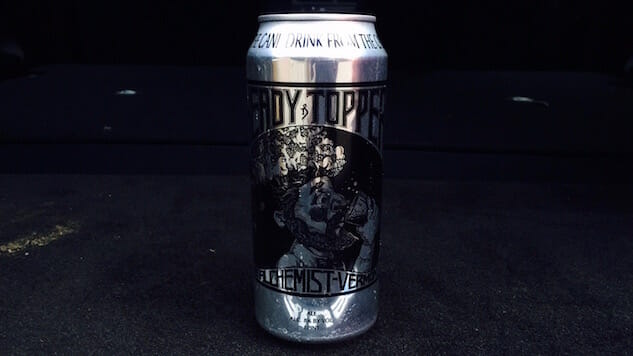
Craft beer is about so much more than special releases, rare beers and hard-to-find treasures, and while beer is better when you’re not just checking boxes off a list of things to try, there is a certain special satisfaction provided by finally sitting down to a glass of beer that you’ve long imagined drinking. It’s the thrill of the hunt, when long hours browsing trade forums or promising favors to friends in return for bottles from far-flung locals culminate in the satisfaction of, at long last, hearing that seductive hiss of the cap being unsealed.
Each beer lover has their own special list of beers to seek out on their journey, and once all the obvious and easy-to-acquire beers are crossed off, it’s time to tackle the white whales. The beers that you can stalk for years before sampling. The mythical brews that every man or woman with a deep appreciation for all things fermented should strive to try.
Here are 10 rare beers, mostly from American craft brewers, that are unmistakably special. They may be divisive, they probably aren’t your 10 favorite beers, but they all deserve your attention and your respect.
Pliny The Younger — Russian River Brewing

Photo via Russian River/Facebook
Let’s start with one of the most notorious bucket list brews in the craft beer world: the potent and pungent triple IPA from California’s wine country. Pliny the Younger is brewed once a year for release on the first Friday of February and is available at Russian River’s Santa Rosa brewpub for just two weeks and a small number of kegs are sent out to Russian River’s best accounts. PtY inspires long lines, big crowds, and even the occasional parking lot brawl. The subjective merits of the hop-driven elixir can be argued (though it does enjoy 100 point ratings at both BeerAdvocate and RateBeer), but what can’t be debated is The Younger’s impact on craft beer culture. Wherever there is talk of The Younger, there are arguments about if it’s overrated or worth the trouble to score a glass, but a true beer lover knows that the experience is often worth more than the liquid in the glass. Getting a taste of Pliny the Younger probably won’t be life changing, but enjoying the hunt and sharing the experience with the like-minded beer-lovers surrounding you is certainly life-affirming.
Heady Topper — The Alchemist
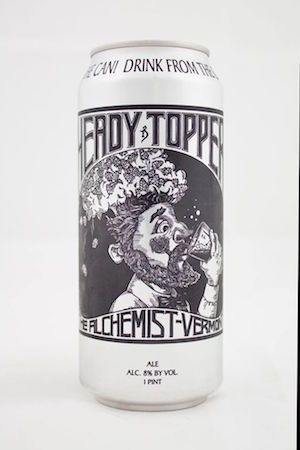
Wanna start an argument with a group of beer geeks? Ask them if Heady (Topper) or Pliny (The Elder) is the better double IPA. For the record there’s no right answer, but Heady is the east coast answer to Russian River’s DIPA, and the Vermont brew enjoys a fiercely loyal fanbase who will drive long miles to fill their trunk with cases of the tall silver cans. Fresh Heady Topper is, well heady; just cracking open a can will fill the room with the spicy, pungent odor of hops. Then you take that first swig from the can, and the hop essence blossoms into your sinuses before the bitterness slams down on your palate. It isn’t long before you’re hitting that can for another long pull, then another, with each sip revealing more depth and complexity to the hop character. Heady Topper is so densely hoppy that you can actually sense the hops in the beer’s mouthfeel; it’s a beer that will show you that there’s more to hops that bitterness and pungency.
Abner — Hill Farmstead

I’m going with the double IPA Abner here, but really any Hill Farmstead brew that ticks your preferred style box is an acceptable choice for a bucket list beer. There are few other American craft breweries that demonstrate the mystique, character, and quality that this Vermont producer does, and the beer geek pilgrimage to the remote farm to sample beers from the source is an honored tradition. Exemplary craftsmanship and a focus on raw materials (including some really great well water) combine to create a long list of triple-A craft brews, and each has a compelling story that evokes a strong sense of family and heritage. It’s rare that ultra-hyped beers will meet expectations, but the few Hill Farmstead beers that I’ve been lucky enough to try have lived up to their stellar reputations. You get points for scoring a bottle or a festival pour (as I have), but the real joy comes from making that trip to the source for a little one-on-one time with Abner, Edward, Arthur or Susan (this feat is still on my personal bucket list).
XII — Westvleteren Trappist Brewery
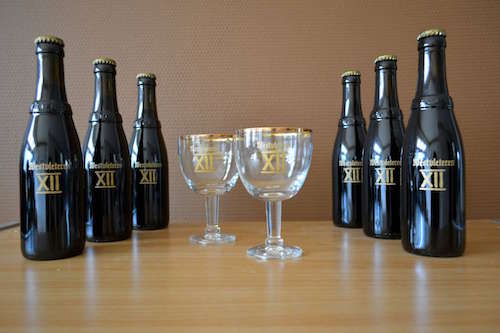
“Westy 12” as it is known colloquially is oft considered one of the finest beers in the world. Brewed by the Trappist monks of the Abbey of Saint Sixtus in Belgium, this dark strong ale is notoriously difficult to acquire. It usually requires a by-appointment visit to the Abbey, where intrepid beer-geek errants can purchase a single wooden crate of 24 yellow-capped bottles. First brewed in 1940, the beer itself is wondrously balanced and bold. Tremendously complex with layer after layer of malt flavor and yeasty essence, Westy 12 is the superlative Belgian Quadrupel. Even after a few thousand six packs were imported to the U.S. by the Shelton Brothers in 2011, bottles fetch high returns on the trade market, but it’s a beer that any worldly beer lover should seek out. (One inside tip: if you want to get a sense of what Westvleteren’s XII is like but don’t want to track a bottle down, pick up the eminently more available ABT 12 from St. Bernardus brewery. This closely-related brewery shares the recipe, the techniques, and most importantly the yeast strain with Westvleteren, but they make a whole lot more beer that the monks, so you can find it without much trouble.)
Dark Lord — 3 Floyds Brewing
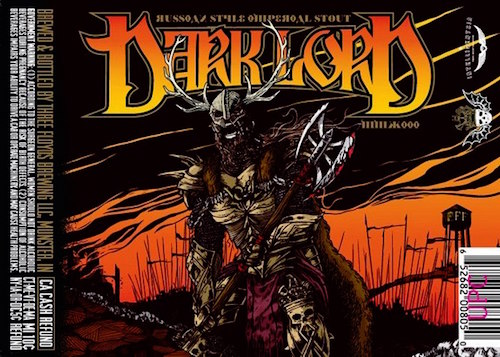
Big, inky imperial stouts are some of the most hyped and sought-after styles of craft beer, and perhaps none is more desired than the wax-dipped and lavishly illustrated bottles of Dark Lord from Munster, Indiana’s 3 Floyds Brewing. Each spring the brewery hosts “Dark Lord Day” — a beer festival and the only time to purchase bottles of the brew made with coffee, vanilla and molasses — and the event has evolved into the most anticipated date on the craft beer calendar. Like nearly every other beer on this list, Dark Lord will spur contentious arguments among craft aficionados, with one cap extolling the depth of flavor and sheer brutality of the metal-influenced brew and the other camp loudly proclaiming it a soy-sauce flavored mess. There’s only one way to find out which team you’re on: you’ll need to break that wax seal for yourself. Even if you don’t love Dark Lord, trying a vertical tasting of several vintages of the stout is eye-opening.
Thomas Hardy’s Ale (a well aged bottle)
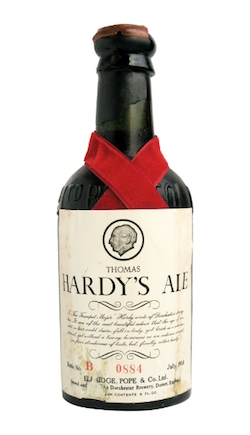
First, the bad news: production on this notorious English barleywine ceased back in 2008, so finding a bottle can be a challenge. The good news is Thomas Hardy Ale is best when left in the cellar for years (or even decades), and there are plenty of fans, pubs and shops who’ve socked away bottles for the long-haul. First brewed in 1968 by Eldridge Pope & Co, and later by a couple of other British breweries, the thick and boozy barleywine is inspired by the namesake English novelist’s “The Trumpet Major,” and the brew was bottled with live yeast to ensure a continued development for many years. The esters of English ale yeast meld with rich treacle sweetness and cutting high alcohols for a truly unique, and unmistakably British tipple. If you manage to track down a bottle, be sure to have a hefty wedge of Stilton blue cheese on hand to complete the experience.
Orval (a brewery fresh bottle)
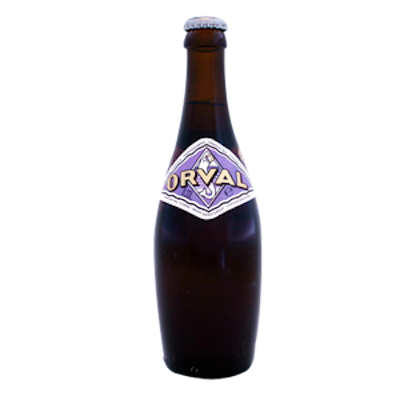
Yeah, you’ve probably had a bottle of the quintessential Belgian pale ale, but a stateside glass of Orval is only half of the story of this beer. Orval is unique even among the tiny group of Trappist ales brewed in Belgium, and the beer features techniques and processes more often considered part of the American beer renaissance than the purview of stodgy monks. Orval is both dry-hopped and bottle conditioned with brettanomyces — the favorite wild yeast of American craft brewers. “Brett” yeast goes to work on sugars that normal ale yeast doesn’t touch, and this provides a lightened body, drier finish, and distinctly complex phenolic aroma. While the influence of brett on the bottles sitting in your local shop’s cooler is wonderful, that dry-hopped character is largely lost before bottles of Orval ever touch American soil. To get the full experience you’re going to need to order a glass of the pale ale in a Belgian beer cafe. Only then will you fully understand why Orval is widely considered to be one of the world’s greatest beers. Or so I’m told; this is another item on my personal bucket list that remains unchecked.
Black Tuesday — The Bruery
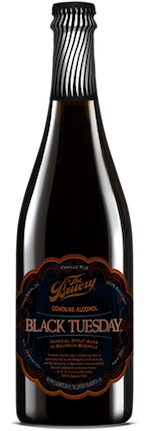
I feel like I have a humorous story about Black Tuesday, but I can’t actually remember it. Such is reality when you’re tangoing with nearly 20%ABV bourbon barrel aged imperial stouts that seem to coat your very soul with the essence of malt and char and alcohol. When a bottle (or heaven help you a vertical of a few years’ worth of bottles) get popped at a bottle share, you can count on things getting weird (in the best way). A Southern California favorite, The Bruery bucks the trends and doesn’t participate in the hop-driven IBU arms race. They’re plenty content to win the race for the biggest, boldest, most tart and most inventive beers. Black Tuesday, released once a year on the eponymous day in October, holds the first two of those prizes and is basically the craft beer equivalent to the fictional Pan-Galactic Gargleblaster cocktail made famous in The Hitchhiker’s Guide to the Galaxy. To paraphrase author Douglas Adams, the effect of Black Tuesday is like “having your brains smashed in by a slice of lemon wrapped round a large gold brick:” simultaneously unforgettable and unrememberable.
Anniversary Ale — Firestone Walker

Firestone Walker Brewery does everything well. We recently called them “the Bo Jackson of the beer world,” and besides incredible core brands, a vibrant wild beer program, and excellent use of the cutting edge of hop varieties, one aspect of Firestone Walker’s game that is most impressive is their spirit barrel aging program. Besides world-class barrel aged gems like the bourbon barrel stout Parabola and their take on the American barleywine Sucaba, the brewery ages a handful of other beers, many of which never see release outside of the brewery. Instead, these hundreds of beer-filled bourbon barrels are combined to create the annual Anniversary Ale release. Brewmaster Matt Brynildson enlists the help of his friends from wineries around California’s central coast to blend the components into a unique cuvee, and every year teams of winemakers compete to craft a winning blend and earn the cardboard crowns and adulation of their peers. Each year’s release is unique, but they all showcase the breadth of character that oak barrels can impart to the various constituent brews. The 19th Anniversary Ale was released in November, 2015, and the brewers and blenders will surely have something special planned for the 20th Anniversary in 2016. You’re going to want a bottle.
Duck Duck Gooze — The Lost Abbey

While American wild ales are finding traction in modern beer culture, few offerings have yet risen to the level of bucket list. One particularly notable example that is worth the challenge of hunting down is the irreverent Duck Duck Gooze. This brew from San Diego’s Lost Abbey is made even more challenging to procure as it is released only once every three years, and when that day rolls around, it sells out in the blink of an eye. If you’re lucky enough to score a bottle, the temptation to flip it to a far-flung trade partner will be great as a bottle Duck Duck Gooze can net you some of the biggest ISOs on your list, but don’t trade it away too hastily. This is one hyped up beer that manages to live up to the fervor. It’s tart, complex, funky, and refined. It tastes like the old world sour beers that inspired it, and a diminutive pour during a festival or bottle share will not do justice to this brew — you need to really get into a glass to learn all the secrets of the beer. The last release was in 2013, so if you’re extra lucky perhaps you’ll get a taste of the 2016 vintage.